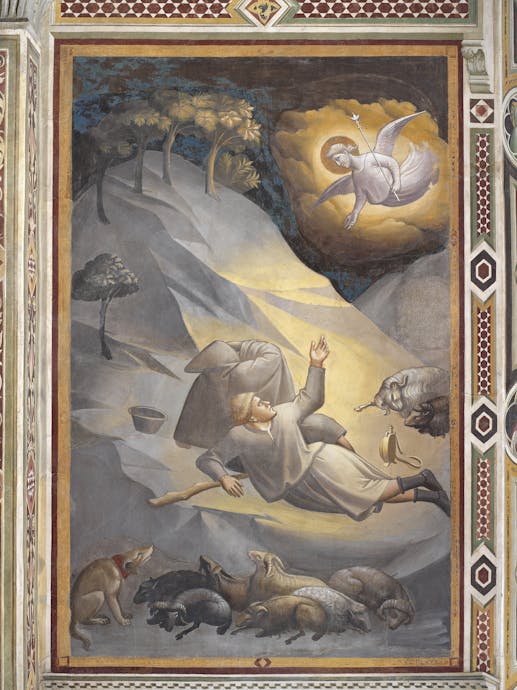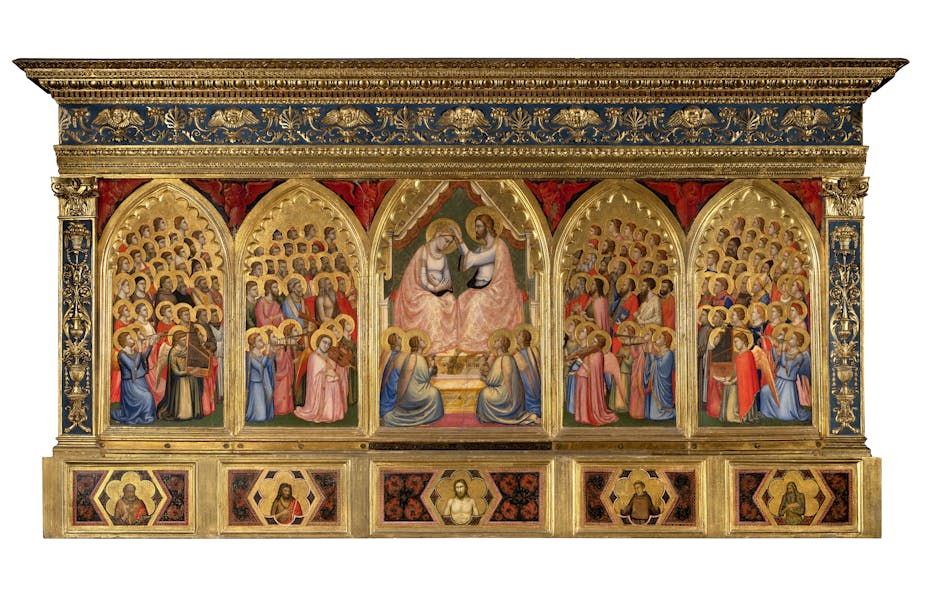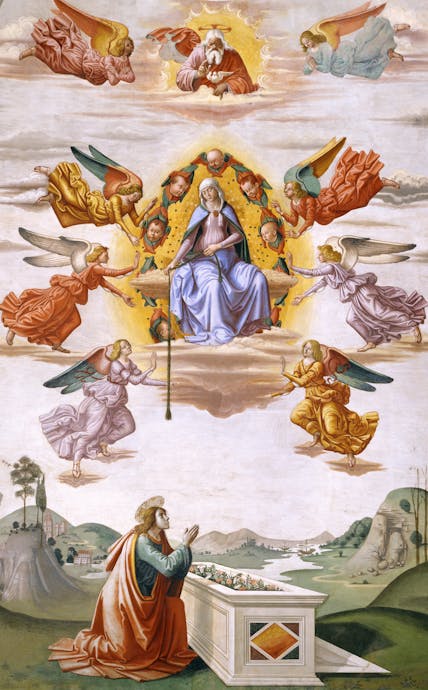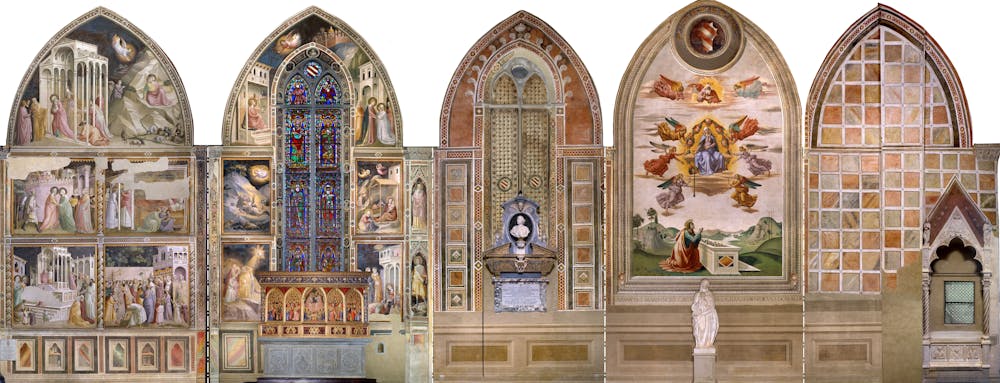
Baroncelli Chapel
The chapel, consisting of two cross-vaulted spaces and dedicated to the Virgin Annunciate, is situated at the end of the south transept.
It was founded in 1328 by Bivigliano, Bartolomeo and Silvestro Manetti and by Vanni and Piero Bandini Baroncelli, two wealthy Florentine merchant bankers who commissioned it for "the wellbeing and salvation of our souls and of those of all our ancestors" as we learn from the inscription on the family's tomb monument, a two-sided work by Giovanni di Balduccio piercing the chapel's entrance wall. Giovanni di Balduccio also carved the two small statues of the Virgin Annunciate and the Announcing Angel on the piers of the arch leading into the chapel.
The intricate figurative decoration in the chapel was painted by Taddeo Gaddi after 1328. The episodes in the Stories the Life of the Virgin tell Mary's story from her miraculous conception to the birth of Christ and the adoration of the Magi. The vaults and two-light window frame contain personifications of the Virtues chosen to illustrate Mary's qualities, which should also be the Franciscan's goals. The arches, piers and stained-glass windows contain figures from the Bible and saints associated with devotion to Mary.

Taddeo Gaddi, Annunciation to the Shepherds, scene from the Stories from the Life of the Virgin, 1328–30. Basilica of Santa Croce, south transept, Baroncelli Chapel
The designs for the stained-glass window and the frescoes depicting Jesus with the Doctors of the Law and the Resurrection on the wall above the chapel's entrance but in extremely poor condition are also by Taddeo Gaddi.
In this cycle, Gaddi resorts to Giotto's style while softening its austerer side to adopt a more anecdotic approach, showing an interest in fabrics and in other fashionable details. He also experiments with a number of innovative solutions that were to become an object of study for subsequent generations, such as architecture foreshortened from different angles, the illusionistic space of niches with liturgical furnishings and, above all, some of the earliest nocturnal scenes in Italian art. Here the dark contrasts with flashes of light to symbolise the revelation of Christ, echoing the idea that God is light. Giotto's polyptych with the Coronation of the Virgin on the altar fits ideally into this context.

The Baroncelli family commissioned certain alterations to the chapel in the later 15th century, including a large fresco on the west wall depicting the Madonna of the Girdle (c. 1485–9) painted by Sebastiano Mainardi to a cartoon by Domenico Ghirlandaio.

Sebastiano Mainardi, Madonna of the Girdle, c. 1485–90. Basilica of Santa Croce, south transept, Baroncelli Chapel
In the 19th century the Giugni, who had acquired the chapel's patronage, added a Madonna and Child carved by Vincenzo Danti in 1568 and they placed on the altar a marble sculpture group depicting The Dead Christ Supported by an Angel carved by Baccio Bandinelli between 1549 and 1552 for Florence cathedral choir, which was dismantled in 1843. The group was moved to the crypt in 1934.

View of the Baroncelli Chapel, Basilica of Santa Croce, south transept
Restoration of Taddeo Gaddi's frescoes in Baroncelli Chapel, Santa Croce (2007)